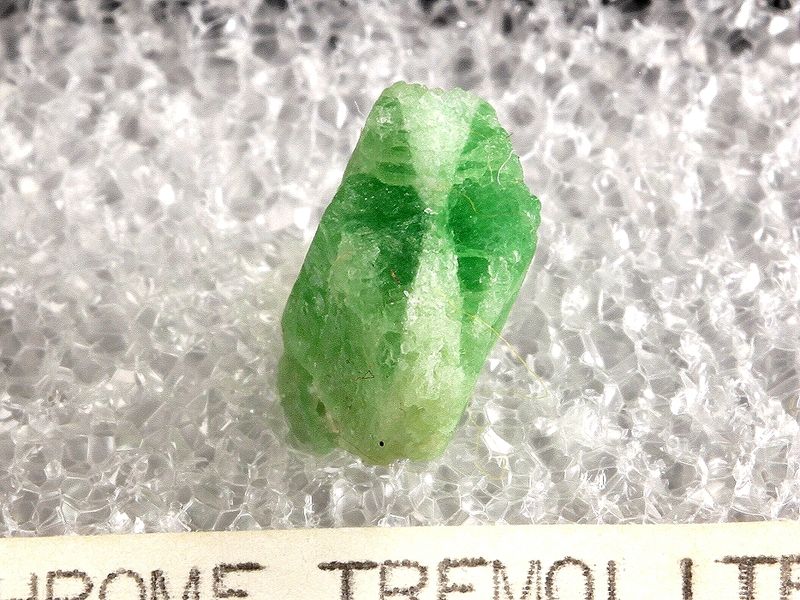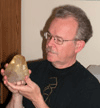| View previous topic :: View next topic |
| Author |
Message |
GneissWare

Joined: 07 Mar 2008
Posts: 1287
Location: California



|
 Posted: Aug 29, 2016 18:40 Post subject: Help with Chromium-rich Tremolite Posted: Aug 29, 2016 18:40 Post subject: Help with Chromium-rich Tremolite |
|
|
I ran across this piece in a collection, and am unsure how to describe the hourglass structure? Is this an exsolution feature or something else?
| Mineral: | Tremolite |
| Locality: | | Mangari, Taita Taveta District, Kenya |  |
|
| Dimensions: | 10 x 9 x 6 mm |
| Description: |
|
| Viewed: |
7656 Time(s) |

|
|
|
| Back to top |
|
 |
GneissWare

Joined: 07 Mar 2008
Posts: 1287
Location: California



|
 Posted: Sep 01, 2016 18:59 Post subject: Help with trapiche-like habit of Chromium-rich Tremolite Posted: Sep 01, 2016 18:59 Post subject: Help with trapiche-like habit of Chromium-rich Tremolite |
|
|
Maybe I should have titled this differently....
This is either some sort of exsolution, or chemical gradient occuring during growth with selective partitioning of the Cr, or something else? It sort of reminds me of trapiche emeralds.
|
|
| Back to top |
|
 |
Pete Richards
Site Admin

Joined: 29 Dec 2008
Posts: 846
Location: Northeast Ohio



|
 Posted: Sep 08, 2016 12:15 Post subject: Re: Help with Chromium-rich Tremolite Posted: Sep 08, 2016 12:15 Post subject: Re: Help with Chromium-rich Tremolite |
|
|
A very nice specimen!
In all likelihood this is an example of sector zonation. Crystals grow by adding layers onto their faces, and as these layers build up, they form a wedge-shaped block of the crystal reaching from the current extent of a face to the origin of growth of the crystal; these sectors record the history of growth of the crystal and the extent of each face at each instant during the growth of the crystal.
It is common for different faces to accept impurities to differing degrees, as a function of the crystal structure exposed on each face. Some of these impurities impart color.
In this tremolite crystal, then, chromium was excluded from the top and bottom faces more than the other faces, throughout the growth history of the crystal. This results in the two light colored wedge-shaped zones clearly seen in this image.
So this is not exsolution (which would be formation of a second phase from materials that were initially impurities in the main crystal, usually formed under hotter conditions), but selective exclusion (or inclusion).
Another example is selective inclusion of sand into certain faces of selenite, forming a conspicuous hour-glass pattern. Other selenite contains fluorescent inclusions in the same positions, and the hour-glass pattern is only visible (or at least conspicuous) when the crystal is viewed under fluorescent light.
_________________
Collecting and studying crystals with interesting habits, twinning, and epitaxy |
|
| Back to top |
|
 |
GneissWare

Joined: 07 Mar 2008
Posts: 1287
Location: California



|
 Posted: Sep 08, 2016 13:10 Post subject: Re: Help with Chromium-rich Tremolite Posted: Sep 08, 2016 13:10 Post subject: Re: Help with Chromium-rich Tremolite |
|
|
Pete,
Nice explanation. So, this is essentially a partitioning effect.
Bob
|
|
| Back to top |
|
 |
|





